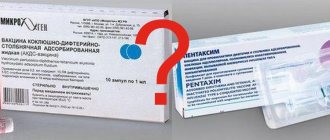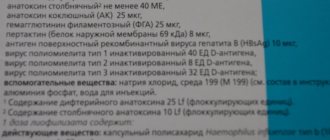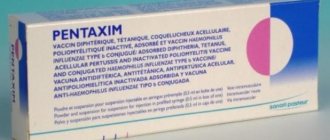Vaccination is a powerful tool in creating a healthy society, a decisive factor in protecting against infectious diseases, thanks to which some of them have practically disappeared from people’s daily lives. Immunogenic drugs are a sensitive biological substance, for which it is important how well the contact with the body occurs.
Once lost as a result of non-compliance with the rules of storage and transportation of vaccines, the biologically active properties cannot be restored. In addition, drug safety indicators are declining. The handling of different groups of vaccine preparations differs, and strict adherence to the rules gives confidence in obtaining full immunity.
Why is it important to store vaccines correctly?
The goal of any vaccine is to create conditions in the human body for the development of immunity against a specific infectious agent, which would persist for the longest possible period of time.
Immunity is formed in response to an antigen taken from an infectious agent. Antigens can be live or killed bacterial, viral particles, toxoids, both natural and artificial.
All types of vaccines exist in an optimal form for their immunogenicity and are divided into 2 main groups:
- live - represented by weakened cultures of pathogens, cultures of closely related pathogenic microorganisms that can cause an effective cross-immune response, as well as genetically engineered products - microorganisms in whose genome genes have been introduced that produce antigens that cause an immune response, while they are safe for humans;
- killed - from whole microbes, their components, individual subunits, toxoids isolated from microorganism cultures, as well as artificially synthesized.
Belonging to a particular group determines the conditions under which the vaccine is best preserved. When producing killed vaccines, microorganisms are inactivated by high temperatures, ultraviolet light or exposure to chemicals (alcohol, formaldehyde, hydrogen peroxide, phenol).
They are convenient because they often do not require special conditions during storage, retaining all their beneficial properties. Live vaccines require more careful treatment and special conditions so that the microorganisms that make up them do not die, but they also induce more durable immunity.
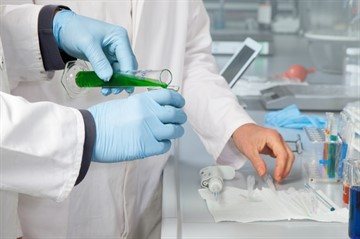
In order for a vaccine product to be safe and effective, active antigens undergo a number of manipulations - purification, preservation, stabilization, which limit its shelf life.
Excessive heat exposure, too low a temperature, sunlight are factors that reduce the activity of immunobiological drugs.
The negative effect of damaging conditions accumulates over time, and each subsequent error in handling the drug irreversibly reduces its ability to generate an immune response in humans.
Inconsistent and incorrect temperature conditions for storing and transporting the vaccine make it useless.
Release forms and composition
The immunobiological drug is available in the form of a lyophilisate . When it is mixed with a solvent, a suspension for intramuscular administration is obtained.
Includes:
- Inactivated antigen of tick-borne encephalitis virus in a dilution of 1:128 in 1 dose of 0.5 ml .
As well as a number of excipients:
- Stabilizers: albumin 250 mcg and sucrose 37.5 mg .
- The role of the formative element is played by gelatin in an amount of 5 mg .
- 3.8 mg was added as a buffer system ,
- as well as trishydroxymethylaminomethane - 06 mg .
- The solvent is aluminum hydroxide gel.
It is important that the vaccine does not contain formaldehyde, antibiotics or preservatives.
Available in ampoules of 0.5 ml (1 dose) or 1 ml (2 doses) complete with a solvent ampoule of 0.65 or 1.2 ml, respectively. The resulting sets are packed in 5 pieces in cardboard boxes.

Optimal storage conditions for different types of vaccines
For all vaccines there is a general temperature range in which their storage is most optimal and safe - from 2 to 8°C .
If this condition is violated, the drugs lose activity. Live vaccines do not tolerate high temperatures. Liquid anti-polio drops, which are taken orally, are frozen to minus 20 degrees during production; they can be stored in the freezer and re-thawed. An opened ampoule can be stored for no more than 2 days at 2-8 degrees, without freezing.
The live vaccine against rotavirus infection, which is also taken orally, cannot be frozen. Live preparations against tuberculosis, influenza, measles, rubella, mumps are lyophilisates of weakened microorganisms.
To obtain the finished drug, the powder with the active component is mixed with a solvent. The lyophilisate is stored in optimal conditions for vaccines, and the solvent is stored at a temperature of plus 2-25 degrees. After mixing, the finished product is stored for 8 hours. Freezing of any component is prohibited.

Killed vaccines also cannot be frozen. Drugs adsorbed on aluminum hydroxide gel (DPT, Pentaxim, anti-diphtheria, anti-tetanus vaccines, anti-hepatitis B) undergo destruction with the release of foreign substances into the solution.
In vaccine preparations containing whole killed microorganisms (against whooping cough, polio, hepatitis A, typhoid fever, tick-borne encephalitis), when frozen, cell destruction occurs and antigens are released. These transformations increase the likelihood of adverse reactions.
Rules for storing vaccination preparations in the refrigerator:
- Before placing the vaccine in the refrigerator, you need to prepare for a possible unexpected power outage. To do this, the lower part of the refrigerator needs to be filled with large containers of water, each about five liters in volume. This water will be able to maintain low temperatures for some time after the device is disconnected from the network.
- One specialist should monitor compliance with the rules for storing drugs. Liquid vaccines, such as Infanrix, should be stored only on the lower shelves, while lyophilized vaccines and OPV should be placed on the upper shelves opposite, but not too close to, the evaporator.
- It is worth maintaining order in the cells, sorting packages by individual types of drugs.
- Any vaccine, be it DPT, Infanrix or Pentaxim, should be stored in the refrigerator for no more than three calendar months.
- The most important storage rules: do not freeze liquid vaccines like Infanrix, do not store them in the refrigerator door, and do not use the same chamber to store food and drinks.
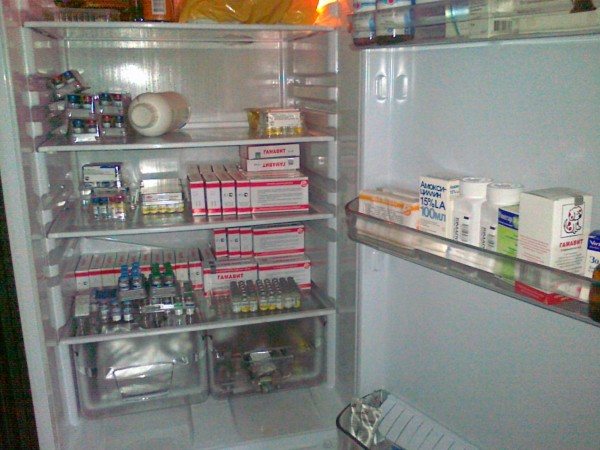
Cold chain
To ensure that the required conditions for keeping vaccines are maintained, from production to direct use in the vaccination room, a number of rules have been created, called the cold chain.
4 levels of temperature safety:
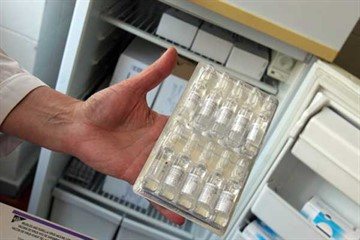
- an enterprise that produces immunobiological medicinal products;
- the warehouse where the ampoules go after they are purchased at the factory;
- pharmacy;
- vaccination room.
The cold chain system achieves its functions through a set of rules that are followed by workers at all levels, equipment to maintain temperature conditions and control at each critical point.
For any vaccine, it is necessary to continuously maintain a temperature of 2-8 degrees above zero.
Changes to the requirements for storage and transportation of the Sputnik V vaccine
At the end of January 2021, Health Minister Mikhail Murashko announced that changes to the registration certificate of the Sputnik V vaccine had been approved. It can now be stored at a temperature of 2-8 ° C, which is the standard storage temperature for most vaccines.
Thus, the production of the Gam-Covid-Vac vaccine is now carried out in two forms: frozen (with a storage temperature of minus 18°C) and lyophilized (with a storage temperature of 2-8°C). Two types of the drug were announced at the end of August 2021, when registration certificate LP-006395 for the frozen form of the vaccine and registration certificate LP-006423 for the Gam-COVID-Vac-Lio lyophilisate were issued. Both versions of the vaccine are absolutely identical in their properties, however, the lyophilized form of release is more expensive and less technologically advanced, as a result of which at the end of January 2021 it is produced at only one production site out of six.
Where are vaccination compounds stored?
In manufacturing plants and other warehouses, drugs are stored in refrigerators and freezers or rooms. Pharmacies use refrigerated display cases, household refrigerators, and freezer counters.
Transportation of drugs is carried out only on special transport equipped with a system for maintaining the set temperature. For transportation and temporary storage, thermal containers and thermal bags with cold elements are used.
In the refrigerator, vaccines are arranged in the following order:
- lyophilized drugs are stored on a shelf next to the freezer;
- the middle shelves are used for adsorbed and inactivated killed vaccines;
- On the shelf furthest from the freezer there are solvents for lyophilized drugs, as well as live ones (these groups of immunological drugs are prohibited from freezing). An exception is oral polio drops;
- shelves on the door and the bottom of the refrigerator are prohibited areas for storing any immunobiological agents.
The refrigerator should be no closer than 10 cm to the wall, and a thermometer must be installed in it. When defrosting the refrigerator, immunobiological preparations are transferred to a container with a cold element, and it is important to prevent their contact in order to avoid freezing of the preparations.
The ampoules in which immunobiological agents are produced are equipped with a thermal indicator to assess the temperature conditions in which the vaccine was on its way to users.
These may be indicators of freezing or rising temperatures. The symbols on the lid indicate the possibility of further use of the solution.
How to properly connect a refrigeration unit?
It would seem that there is nothing difficult about connecting a freezer, but even here you need to take into account your nuances. The location of its installation, the distance to walls and objects, as well as the condition of the outlet where the device will be plugged into play a role. When choosing a location, you should give preference to a separate room with a good level of ventilation; it is advisable that heating devices and other heat sources are removed from the refrigerator. It must stand level on the floor; to monitor compliance with this rule, you can use a special level; however, it must not be placed too close to the wall; the distance should not be less than 10 cm, otherwise air circulation will be disrupted. The socket into which the refrigeration unit is plugged in must be in good working order; the possibility of accidentally disconnecting it from the network must be excluded. If all of the above conditions are met, you can connect the device to the network, the next step is installing the thermostat.
